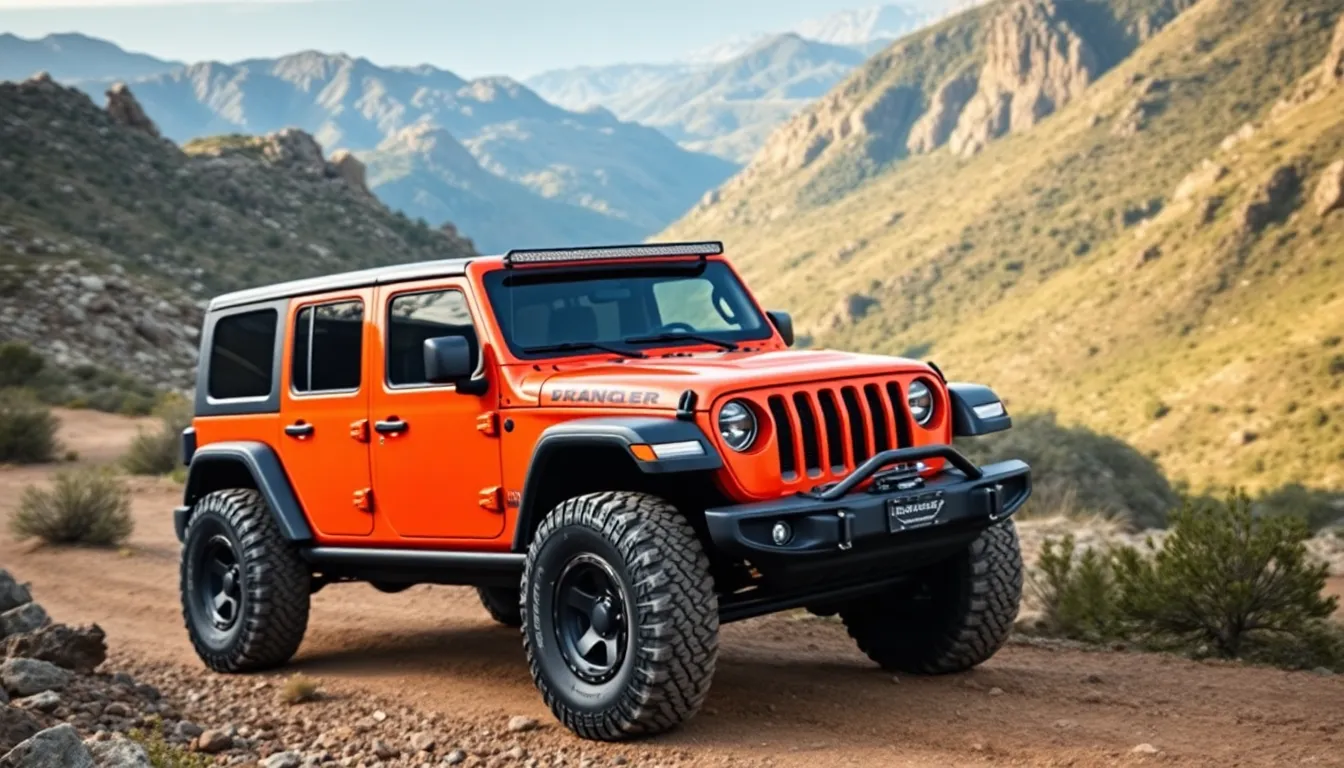Looking for the perfect Jeep Wrangler engine options to power your off-road adventures? The heart of your Wrangler determines everything from trail capability to fuel economy, making this choice critical for your driving experience.
When it comes to Jeep Wrangler powertrains, you’ll find a diverse lineup ranging from the efficient 2.0L turbocharged four-cylinder to the mighty 6.4L HEMI V8 in the Rubicon 392. Each engine offers distinct benefits—whether you’re seeking maximum torque for rock crawling, optimal fuel efficiency for daily driving, or the perfect balance between power and economy. Understanding these options helps you select the Wrangler that perfectly matches your lifestyle and performance needs.
The Evolution of Jeep Wrangler Engine Options
The Jeep Wrangler’s powertrain lineup has transformed dramatically since its military origins. Early CJ models featured simple, rugged four-cylinder engines focused purely on functionality rather than comfort or performance. These utilitarian powerplants laid the groundwork for the Wrangler’s reputation for reliability in challenging conditions.
During the 1980s and 1990s, the YJ and TJ generations introduced more refined inline-six engines that balanced trail capability with improved on-road drivability. The legendary 4.0L straight-six became iconic among Jeep enthusiasts for its nearly bulletproof reliability and impressive low-end torque. Many owners still seek out these models for their mechanical simplicity and ease of maintenance.
The JK generation (2007-2018) marked a important shift as Jeep introduced the 3.6L Pentastar V6, delivering 285 horsepower while improving fuel economy over previous engines. This powertrain modernized the Wrangler’s performance characteristics without sacrificing its off-road DNA. The Pentastar brought smoother power delivery and reduced the notorious Jeep “death wobble” experienced with earlier models.
Today’s JL Wrangler (2018-present) offers the most diverse engine lineup in the vehicle’s history. The standard 3.6L V6 continues as the backbone, but now there’s also a turbocharged 2.0L four-cylinder, a 3.0L EcoDiesel, a plug-in hybrid 4xe option, and the monstrous 6.4L HEMI V8 in the Rubicon 392. This evolution reflects changing consumer preferences, stricter emissions standards, and technological advancements in automotive engineering.
The modern Wrangler engine options reflect Jeep’s commitment to preserving off-road capability while adapting to contemporary demands for efficiency, reduced emissions, and enhanced on-road performance. Each new powertrain maintains the Wrangler’s core identity while expanding its appeal to broader audiences beyond hardcore trail enthusiasts.
Current Jeep Wrangler Engine Lineup
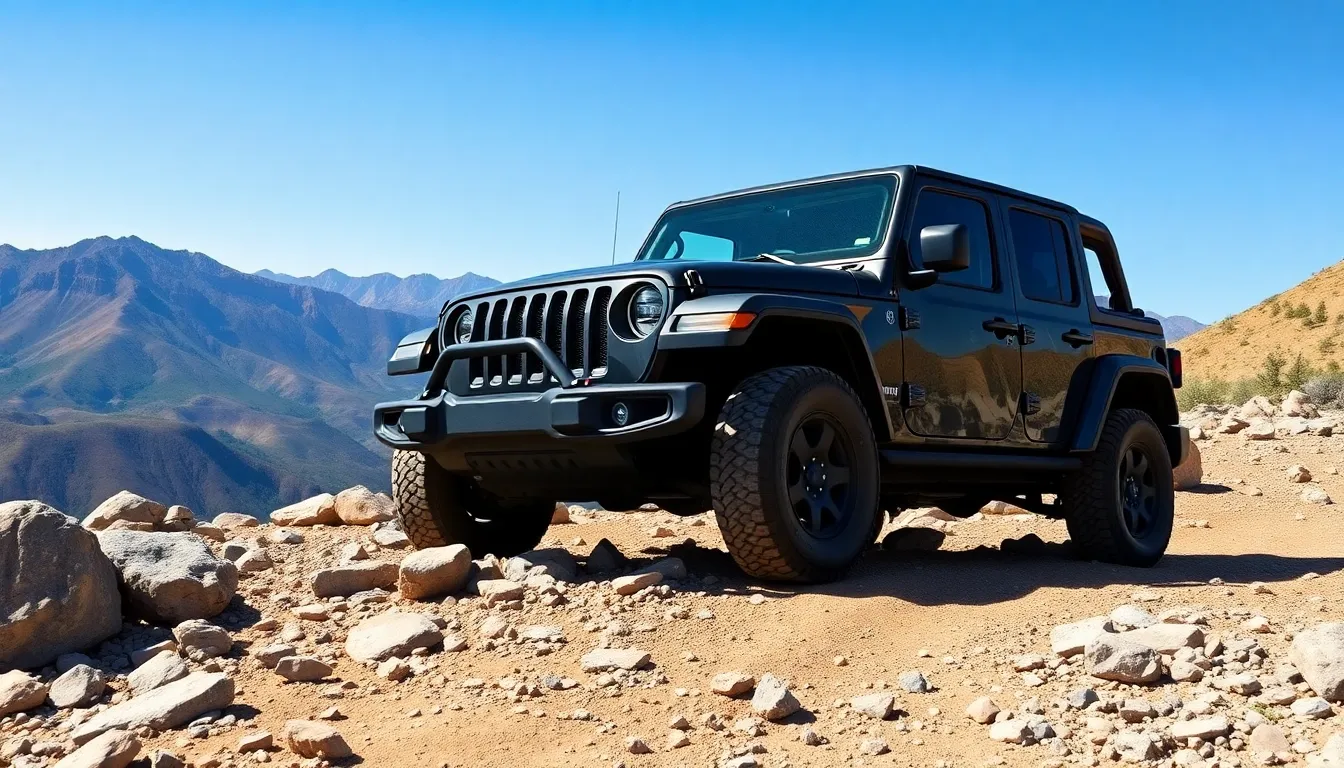
The 2025 Jeep Wrangler offers a diverse range of powertrains designed to meet various driving needs while maintaining the iconic off-road capability Jeep is known for. Each engine option provides unique benefits for different types of Wrangler enthusiasts, from trail warriors to daily commuters.
3.6L Pentastar V6
The 3.6L Pentastar V6 serves as the backbone of the Wrangler lineup, generating 285 horsepower and 260 lb-ft of torque. This reliable powertrain comes standard with Engine Stop/Start Technology that automatically shuts off the engine at complete stops to improve fuel efficiency. Many purists appreciate that this engine can be paired with a six-speed manual transmission on select trims, providing that classic Jeep driving experience. The V6 delivers impressive capability with a 5,000 lbs towing capacity while achieving approximately 19 MPG combined fuel economy. It’s an excellent all-around choice for drivers who want proven performance without complexity.
2.0L Turbocharged Four-Cylinder
The 2.0L turbocharged four-cylinder engine delivers surprising punch with 270 horsepower and 295 lb-ft of torque. Though slightly lower in horsepower than the V6, this engine actually produces more torque at lower RPMs, making it responsive for both city driving and trail obstacles. Every 2.0L turbo comes paired with an automatic transmission and maintains the same 5,000 lbs towing capacity as the V6. Fuel economy improves to around 21 MPG combined, making it the more efficient conventional engine option. The turbocharged four-cylinder comes standard on the Sahara trim and remains available across most other gas-powered models in the lineup.
3.0L EcoDiesel V6
The 3.0L EcoDiesel V6 engine appears to be phased out for the 2025 Wrangler lineup based on current specifications. Previous Wrangler models featured this diesel option, which was known for its outstanding torque and long-range cruising ability. Jeep has shifted focus to its other powertrains, particularly emphasizing the gas engines and plug-in hybrid technology. This change likely reflects evolving emissions standards and consumer preferences moving toward electrification rather than diesel technology.
6.4L HEMI V8
The mighty 6.4L HEMI V8 engine is no longer offered in the 2025 Jeep Wrangler. This powerful engine was previously available in special editions like the Rubicon 392, where it delivered exhilarating performance with tremendous horsepower and torque figures. The discontinuation of the V8 option indicates Jeep’s strategic shift toward more efficient powertrains, including the plug-in hybrid 4xe model that delivers comparable torque figures with significantly better fuel economy. The 4xe now represents the premium performance option in the Wrangler lineup, producing an impressive 375 horsepower and 470 lb-ft of torque while achieving an estimated 49 MPGe combined.
Hybrid Options: The 4xe Powertrain
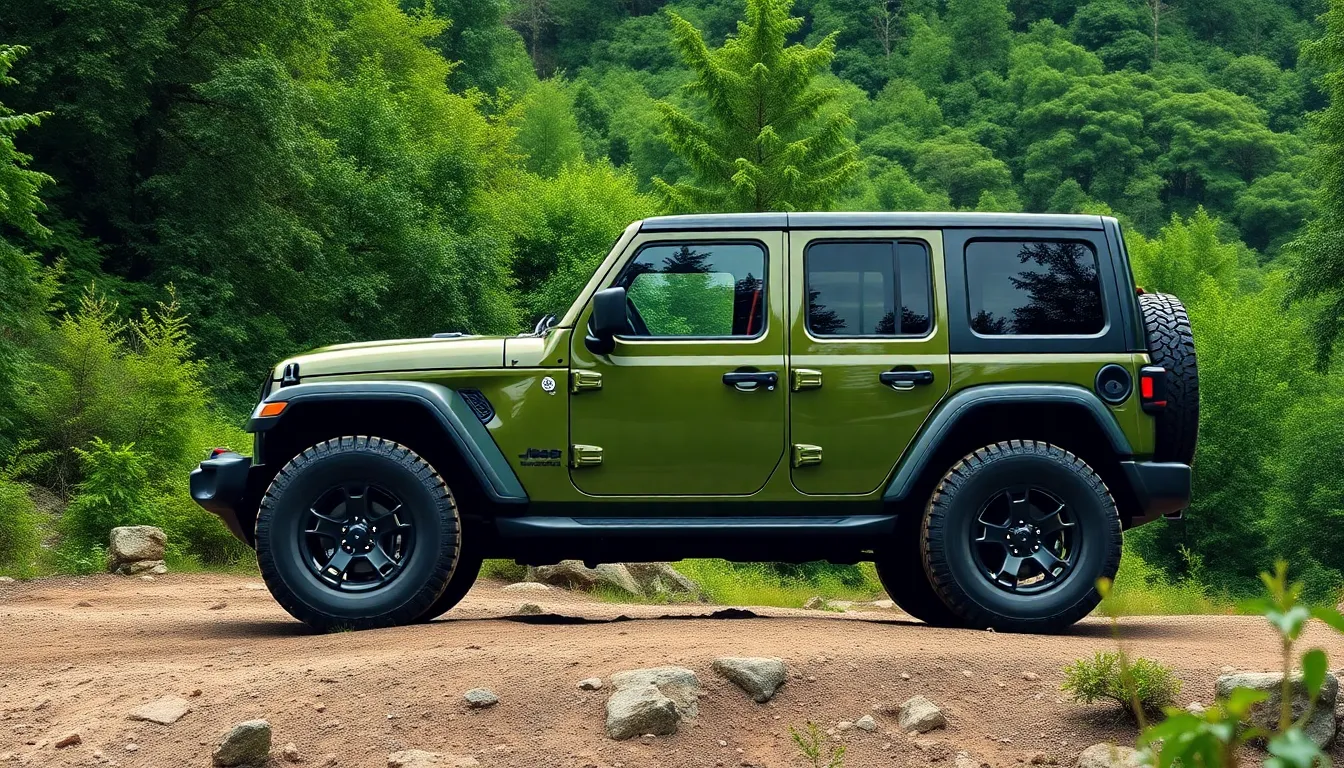
The 4xe plug-in hybrid represents Jeep’s most innovative powertrain solution for the 2025 Wrangler lineup. Combining a 2.0-liter turbocharged inline-four engine with electric motors, this sophisticated system delivers an impressive 375 horsepower and class-leading 470 lb-ft of torque. These performance figures make the 4xe the most powerful option in the current Wrangler family, effectively replacing the discontinued 6.4L HEMI V8 as the premium performance choice.
Fuel efficiency stands out as a major advantage of the 4xe, achieving approximately 49 MPGe combined. This exceptional economy rating comes without sacrificing the Wrangler’s legendary off-road capability, allowing drivers to enjoy electric-only operation for short trail runs or daily commutes. Electric power actually enhances the off-road experience by providing instant torque at low speeds—perfect for precise rock crawling.
Towing capacity reaches around 3,500 pounds with the 4xe powertrain, slightly less than the 5,000-pound rating of the 3.6L Pentastar V6. This reduction reflects the additional weight of the hybrid components, including the battery pack and electric motors. Even though this trade-off, the 4xe offers a compelling balance of utility and efficiency that appeals to Wrangler enthusiasts looking to reduce their environmental footprint.
The 4xe system incorporates regenerative braking technology that captures energy during deceleration, helping to recharge the battery during normal driving. This feature proves particularly useful during off-road descents, where controlled downhill speeds generate electricity rather than simply wearing down brake components. Multiple driving modes allow you to prioritize electric-only operation, hybrid efficiency, or maximum performance depending on your needs at any given moment.
Historical Jeep Wrangler Engines

Jeep Wrangler engines have evolved dramatically throughout the vehicle’s storied history, reflecting changes in ownership, technology advancements, and shifting market demands. These powerplants tell the story of Jeep’s commitment to balancing off-road capability with changing consumer expectations.
AMC Era Engines (1986-2006)
The AMC era cemented Jeep’s reputation for bulletproof reliability with the legendary 4.0L AMC Inline-6 engine (1987-2006). This straight-six powerplant earned iconic status among off-road enthusiasts for its exceptional durability and impressive low-end torque characteristics. Producing approximately 180 horsepower, this engine powered many Wrangler models (YJ and TJ generations) alongside other popular Jeep vehicles like the Cherokee XJ and Grand Cherokee ZJ. Owners typically paired this workhorse with either a five-speed manual transmission or a three-speed automatic, creating a drivetrain combination that could handle decades of abuse on challenging trails. Many Jeep enthusiasts still consider this engine the gold standard for off-road reliability.
Chrysler and FCA Powerplants (2007-Present)
The Chrysler acquisition brought important changes to Wrangler’s engine lineup, starting with the 3.8L Chrysler V6 (2007-2011). This transition from inline-six to V6 architecture coincided with the introduction of the JK Wrangler model. Generating 202 horsepower and 237 lb-ft of torque, this engine delivered better highway performance than its predecessor but received mixed reviews from hardcore off-roaders accustomed to the 4.0L’s character. Transmission options expanded to include a six-speed manual (Chrysler NSG370) and a 4-speed automatic (Chrysler Ultradrive 42RLE).
A major upgrade arrived in 2012 with the introduction of the 3.6L Pentastar V6, producing 285 horsepower and 260 lb-ft of torque. This substantial power increase transformed the Wrangler’s on-road dynamics while maintaining its trail capability. The Pentastar remains the standard gasoline engine option in modern Wranglers, now paired with more sophisticated transmissions including six-speed manuals and five-speed automatics (Mercedes-Benz NAG1-family W5A580). Beyond North American shores, Jeep offered a 2.8L VM Motori turbodiesel inline-4 engine producing 177 horsepower and an impressive 302 lb-ft of torque, catering to international markets where diesel powertrains are preferred.
| Era | Engine | Type | Power Output | Notable Characteristics |
|---|---|---|---|---|
| AMC Era (1987-2006) | 4.0L AMC Inline-6 | Inline 6 | ~180 hp | Legendary durability, excellent torque for rock crawling |
| Chrysler Era (2007-2011) | 3.8L Chrysler V6 | V6 | 202 hp, 237 lb-ft | Better highway performance, mixed off-road reception |
| FCA Era (2012-Present) | 3.6L Pentastar V6 | V6 | 285 hp, 260 lb-ft | Modern refinement with increased power |
| International Options | 2.8L VM Motori Diesel | Inline 4 turbo | 177 hp, 302 lb-ft | Superior torque, improved fuel efficiency |
Performance Comparison of Jeep Wrangler Engines
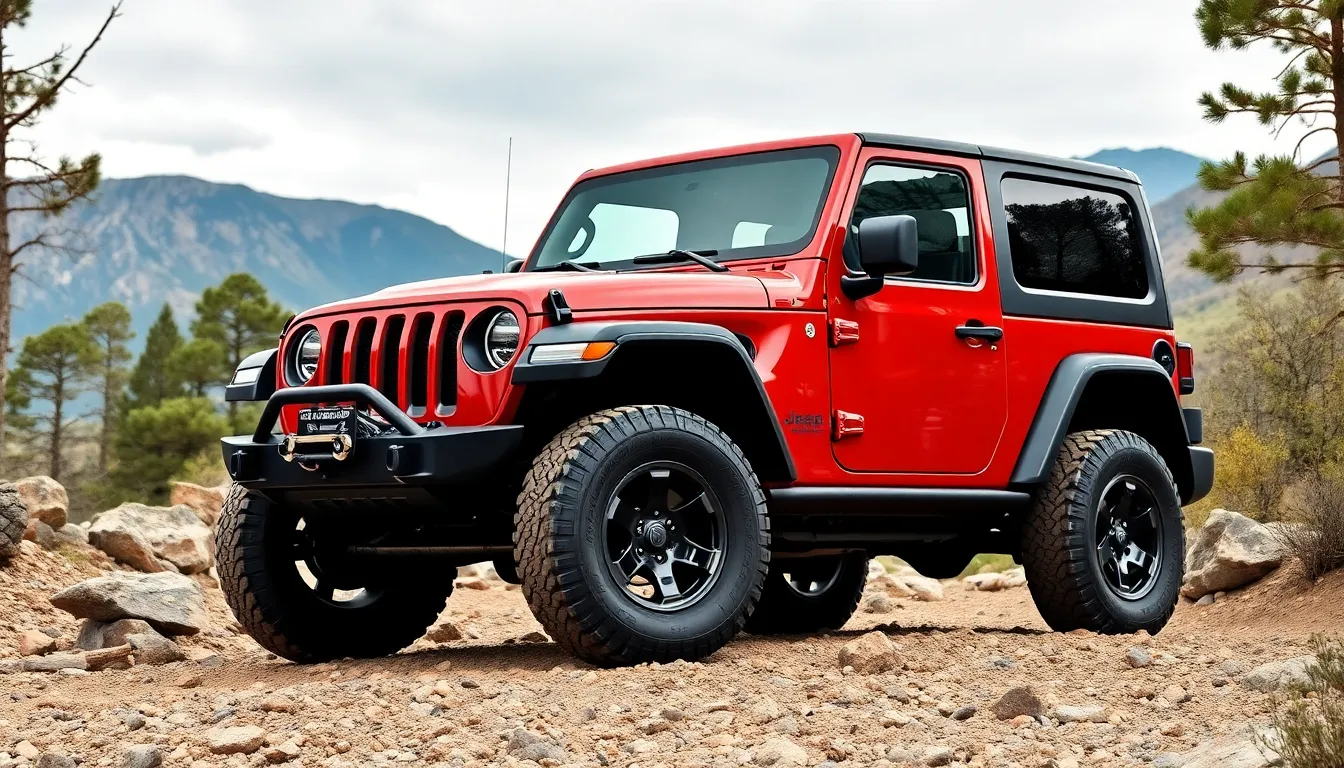
Jeep Wrangler engines offer distinct performance profiles that cater to different driving scenarios and preferences. Each powertrain option delivers a unique balance of power, efficiency, and capability that defines the Wrangler experience.
Power and Torque Ratings
The 3.6L Pentastar V6 generates 285 horsepower and 260 lb-ft of torque, providing reliable power delivery for traditional off-road enthusiasts. This engine’s balanced power band makes it exceptionally versatile for both trail crawling and highway driving. Many Wrangler owners appreciate the V6’s linear power delivery, especially when paired with the 6-speed manual transmission that allows for precise control during technical off-road maneuvers.
The 2.0L turbocharged inline-4 produces slightly less horsepower at 270 hp but delivers more torque at 295 lb-ft, resulting in noticeably better acceleration and low-end grunt. This additional torque translates to improved off-the-line performance and better responsiveness during everyday driving situations like merging onto highways or passing slower vehicles. The turbocharger spools quickly, minimizing lag and providing power when you need it most.
The 4xe plug-in hybrid stands as the performance leader in the lineup with an impressive 375 horsepower and 470 lb-ft of torque. This electrified powertrain combines the 2.0L turbocharged engine with electric motors to deliver instant torque at virtually any speed. The electric assistance fills in power gaps where traditional engines might lag, creating a smooth and responsive driving experience both on pavement and off-road. Rock crawling becomes particularly impressive with the 4xe, as the electric motors provide precise torque control at extremely low speeds.
Fuel Economy Considerations
The 3.6L Pentastar V6 achieves approximately 19 MPG combined, representing the baseline fuel economy for the Wrangler lineup. Models equipped with the eTorque mild-hybrid system see slight improvements in efficiency and smoother operation. The V6 consumes more fuel during city driving cycles but performs relatively well on highway stretches where its power band can settle into an efficient range.
The 2.0L turbocharged engine delivers better efficiency with around 21 MPG combined, offering a modest but noticeable improvement over the V6. This engine’s smaller displacement and advanced turbocharging technology help it achieve better fuel economy without sacrificing the capability Wrangler owners expect. The turbo-four performs particularly well in varied driving conditions, maintaining efficiency across different speeds and terrains.
The 4xe plug-in hybrid dramatically outperforms conventional powertrains with up to 49 MPGe combined when operating in electric mode. This exceptional efficiency comes with the ability to travel up to 21 miles on electric power alone, making daily commutes potentially gasoline-free for many owners. The regenerative braking system recaptures energy during deceleration, further improving efficiency during off-road adventures where frequent braking occurs. Even though its focus on efficiency, the 4xe maintains a respectable 3,500-pound towing capacity, only 1,500 pounds less than its conventional counterparts.
| Engine | Horsepower | Torque (lb-ft) | Transmission | Towing Capacity | Combined MPG/MPGe |
|---|---|---|---|---|---|
| 3.6L Pentastar V6 | 285 | 260 | 6-speed manual / 8-speed auto | 5,000 lbs | 19 MPG |
| 2.0L Turbo I4 | 270 | 295 | 8-speed automatic | 5,000 lbs | 21 MPG |
| PHEV 2.0L Turbo (4xe) | 375 | 470 | 8-speed automatic + electric motor | 3,500 lbs | 49 MPGe |
Choosing the Right Engine for Your Wrangler
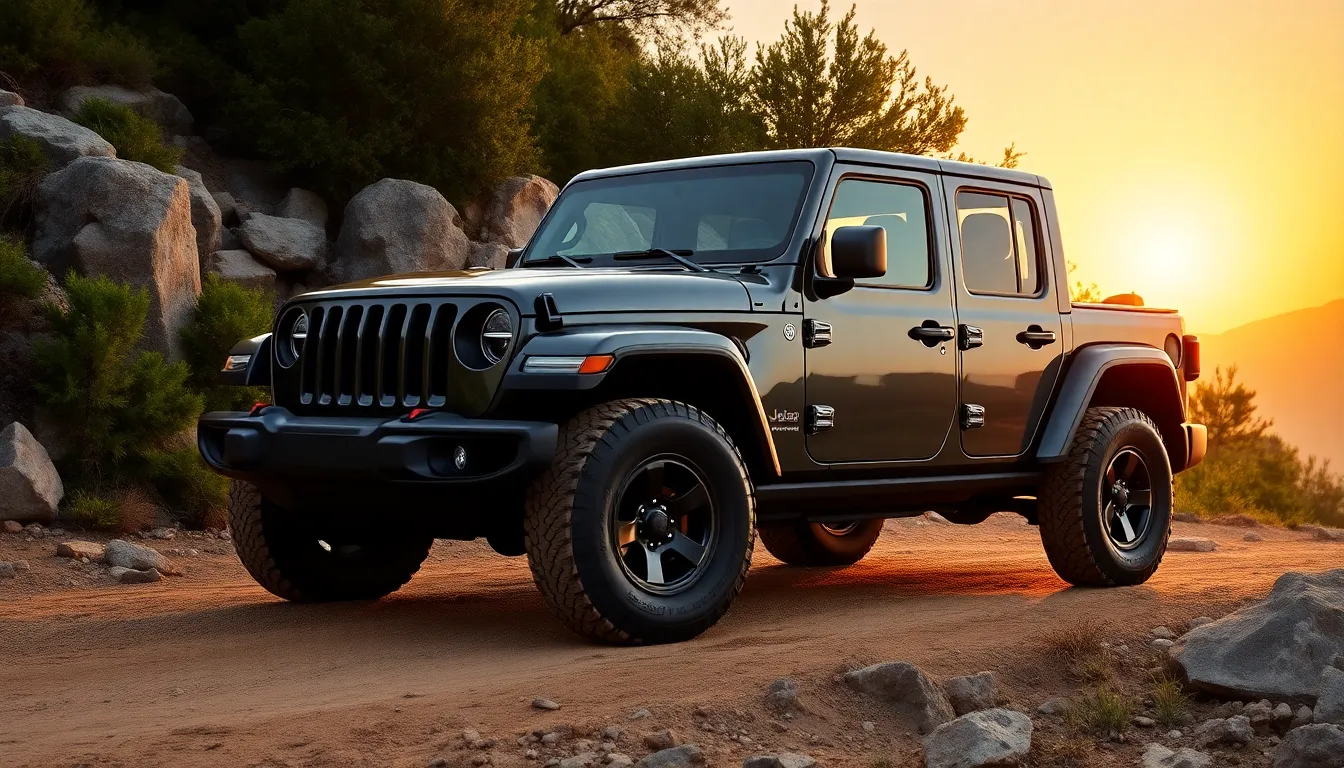
The 2025 Jeep Wrangler lineup offers multiple engine options customized to different driving styles and needs. Each powertrain presents unique advantages depending on your priorities for off-road capability, daily driving comfort, and fuel efficiency.
Off-Road Performance Factors
Torque delivery makes a important difference when tackling challenging trails and obstacles. The 4xe Plug-in Hybrid stands out with 470 lb-ft of immediate torque, providing exceptional control during rock crawling and steep ascents. Ground clearance remains consistent across most engine options, with Wranglers offering up to 12.9 inches of clearance and the ability to ford water up to 34 inches deep. Transmission choice affects your off-road experience considerably—the 3.6L Pentastar V6 comes with an available 6-speed manual transmission preferred by off-road purists for its direct control feel. Low-end power varies significantly between options: the 2.0L Turbocharged Four-Cylinder generates 295 lb-ft of torque at lower RPMs compared to the naturally aspirated V6, making it surprisingly capable on technical terrain. Engine cooling becomes crucial during extended off-road sessions, with the 3.6L Pentastar featuring robust cooling systems designed for prolonged low-speed operation in challenging conditions.
Daily Driving Considerations
Fuel efficiency varies dramatically across the Wrangler’s engine lineup, from the 4xe’s impressive 49 MPGe to the 3.6L V6’s 19 MPG combined rating. Highway noise levels differ between options—the smoother power delivery of the turbocharged engines tends to create a more relaxed cruising experience compared to the naturally aspirated V6. Maintenance requirements should factor into your decision, as the 3.6L Pentastar V6 benefits from widespread service availability and parts commonality across the Jeep lineup. Acceleration performance ranges from the 4xe’s quick 6-second 0-60 mph time to the more moderate pace of the standard V6, affecting merging and passing capabilities on highways. Towing capacity reaches 5,000 pounds with the 3.6L V6, while the 4xe hybrid offers a reduced 3,500-pound rating—an important consideration if you’ll be hauling boats, campers or other recreational equipment. Cold-weather starting reliability remains excellent across all powertrains, though the 3.6L Pentastar’s proven track record gives it a slight edge in extreme conditions.
Conclusion
Your Wrangler’s heart matters more than you might think. Whether you’re conquering rocky trails or handling city streets the right engine transforms your Jeep experience.
Today’s lineup offers something for everyone. The tried-and-true 3.6L Pentastar delivers reliable performance while the 2.0L turbo balances efficiency with surprising power. For those looking to the future the 4xe hybrid brings groundbreaking torque and efficiency to the legendary off-roader.
Remember that your driving habits should guide your choice. Trail enthusiasts might prioritize low-end torque while commuters might value fuel economy. The perfect Wrangler engine aligns with your lifestyle expectations and budget.
As Jeep continues evolving its powertrain options one thing remains constant: the freedom to choose how you power your adventures.
Frequently Asked Questions
What engines are available in the 2025 Jeep Wrangler?
The 2025 Jeep Wrangler offers three main engine options: the 3.6L Pentastar V6 (285 horsepower, 260 lb-ft torque), the 2.0L turbocharged four-cylinder (270 horsepower), and the 4xe plug-in hybrid. The 3.0L EcoDiesel V6 and 6.4L HEMI V8 have been discontinued as Jeep shifts toward more efficient powertrains.
Which Jeep Wrangler engine is best for off-roading?
The 4xe plug-in hybrid excels off-road with 470 lb-ft of instant torque that enhances control on challenging trails. However, the 3.6L Pentastar V6 remains popular among purists, especially with its manual transmission option. Your choice should depend on your specific trail needs—immediate torque delivery for rock crawling or consistent power for varied terrain.
What is the most fuel-efficient Jeep Wrangler engine?
The 4xe plug-in hybrid is by far the most fuel-efficient option, achieving approximately 49 MPGe combined. It allows for electric-only operation during short trail runs or daily commutes. The 2.0L turbocharged engine follows with 21 MPG combined, while the 3.6L Pentastar V6 averages about 19 MPG combined.
Which Jeep Wrangler engine has the best towing capacity?
The 3.6L Pentastar V6 offers the best towing capacity at 5,000 pounds, making it ideal for hauling trailers, boats, or camping gear. The 4xe plug-in hybrid has a slightly lower towing capacity of around 3,500 pounds, while still providing sufficient capability for most recreational towing needs.
How does the 4xe plug-in hybrid Wrangler work?
The 4xe combines a 2.0-liter turbocharged inline-four engine with electric motors to produce 375 horsepower and 470 lb-ft of torque. It features regenerative braking technology and multiple driving modes (Hybrid, Electric, and eSave). The system allows for up to 21 miles of all-electric range and significantly improved fuel economy while maintaining Jeep’s legendary off-road capability.
What was the most reliable historical Jeep Wrangler engine?
The 4.0L AMC Inline-6 (1986-2006) is widely considered the most reliable Wrangler engine. Known for its exceptional durability and low-end torque, many of these engines surpassed 300,000 miles with proper maintenance. Its simple design made it easy to repair and modify, establishing a legendary status among Jeep enthusiasts for its bulletproof reliability in tough conditions.
How do I choose the right Jeep Wrangler engine for my needs?
Consider your primary use: for hardcore off-roading, the torque-rich 4xe or the manual-transmission 3.6L V6 excel. For daily commuting, the fuel-efficient 4xe or 2.0L turbo make more sense. If you frequently tow, the 3.6L V6 offers the highest capacity. Balance your needs between off-road performance, fuel economy, and practical considerations like maintenance costs.
How has Jeep Wrangler engine technology evolved over time?
Wrangler engines have evolved from simple, function-focused four-cylinders in early CJ models to today’s diverse, technologically advanced options. The progression includes the durable AMC inline-six engines, the transition to the 3.8L V6 in the Chrysler era, the improved 3.6L Pentastar V6, and now hybrid technology with the 4xe. Each generation has balanced increasing power and efficiency while maintaining off-road capability.
